June 25, 2024–Dubrovnik, Croatia
- mlchad147
- Jun 26, 2024
- 5 min read

Another day, another walled city. Greetings from the Queen of the Adriatic, as Dubrovnik likes to be called. To say that this city’s economy is based on tourism would be an understatement. This small city of 42,000 annually sees 36 tourists for every resident, and today Michele and I were two of them.
Those tourists come to see the beautiful and remarkably well preserved walled city, which is a UNESCO World Heritage Site. Generally speaking, that status affords a significant degree of protection to a designated site, but that didn’t stop the Yugoslav Peoples Army (basically Serbia and Montenegro) from shelling the fortified old city during Croatia’s war of independence in 1991. During that shelling more than three fourths of the buildings inside the walled city were damaged, but all have been repaired or rebuilt, and today no evidence of the destruction remains.
I would describe the walled old city as compact, with the perimeter measuring just 1.2 miles. The walls are quite high, and what’s inside or outside is much clearer than in some of the other walled cities we’ve visited. The city sits along the waterfront at the base of a mountain, which necessitated the construction of additional forts on and at the top of the mountain to protect the city from above. We didn’t visit any of those fortifications, but we did see them.
Our day started with a drive up yet another narrow, cliffside road to a point high on the mountain, overlooking the city. It’s a great vantage point to see the walled city far below, as well as to admire the nearby islands that afford the harbor protection from the waves. We lingered for a few minutes and took some photos, then returned to our bus for the ride down to the walled city.
Our tour guide then led us on a ninety minute walk through the well laid out inner city. It’s almost impossible to get lost, as there’s a main, broad thoroughfare, the Stradun, that bisects the city, with narrower side streets radiating out from the center. Also, the entire walled enclosure is probably is no more than three city blocks long, so getting from one end to the other takes little time, assuming you’re good at working your way through the mob of your fellow tourists.
The vendors inside the city were taking full advantage of the fact that several scenes from the Game of Thrones were filmed here. I’ll confess that I’ve never watched a minute of the show, so the merchandise didn’t mean anything to me, but I assume it’s a big seller. At any rate, we did see a couple spots where scenes were filmed, including the Jesuit Staircase, a/k/a GOT Staircase of Shame, and Blackwater Bay, an area along the water below the wall.
Of far more substance were the Rectory, where the city ruler resided, the Jesuit Church of Saint Ignatius, the Dominican Church and Monastery, the Bell Tower, and the Cathedral of the Assumption of the Virgin Mary, including the astounding Treasury Room. I’ll provide photos below.
The walled city also contains many of the features we’ve seen in other old town sections of cities we’ve visited, including narrow, shop and cafe lined side streets. After our tour was over we were given ninety minutes of free time to explore on our own, and we divided that time pretty evenly between seeking out more sights we might have missed and poking around in the many small shops. The walled city is a souvenir hunter’s paradise, and if you go home without something it’s your own fault.
Before we knew it, our free time was over and it was time to work our way through the crowd of tourists, leave the walls behind and find our guide and the bus. It wasn’t far to get from the walled city to the pier, but it did take a little time to get back due to heavy traffic. I mentioned in the first paragraph that this city sees a lot of tourists, and that’s something to take into account if you ever plan to visit Dubrovnik. Everything is just going to take a little longer.
Safely aboard the ship, we weighed anchor at 5:45 and set sail for Kotor, Montenegro, our next port of call. That’s a tender port, meaning that our ability to go ashore will depend on whether the seas in the harbor are calm enough to use our lifeboats to ferry passengers ashore and back. We’ve missed a few tender ports on this cruise due to rough seas, so it does happen. Fingers crossed that it’s placid at Kotor tomorrow. Either way, I’ll be back as always with a full report. Stay tuned.
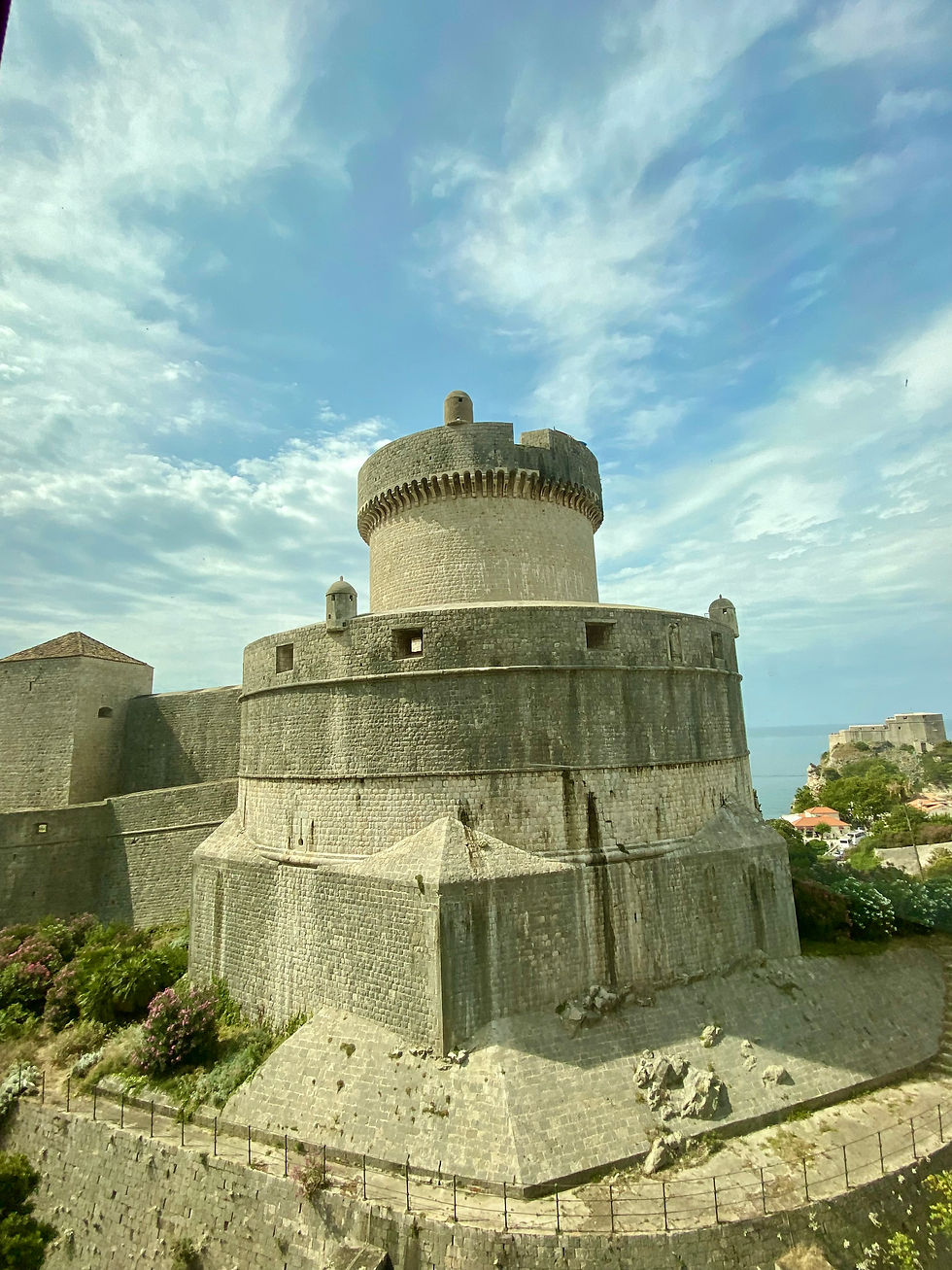
On the way up to the vantage point overlooking the city. This is one of the forts protecting the city from above.
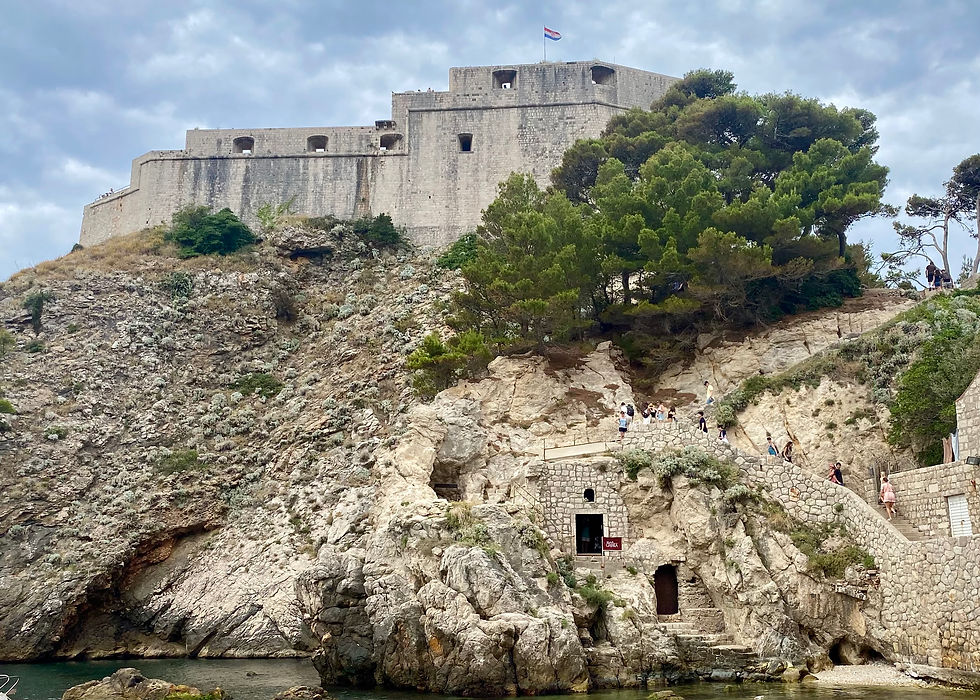
A fort above Blackwater Bay.

Dubrovnik from above. Beautiful view.

Coming down the back side of the mountain. Those mountains in the background are in Bosnia Herzegovina. Croatia is only a mile or two wide at its narrowest point in the far south of the country.

Inside the walled old city. The bells in the clock tower are rung by two bronze soldiers.

A small statue built into the side of one of the buildings.
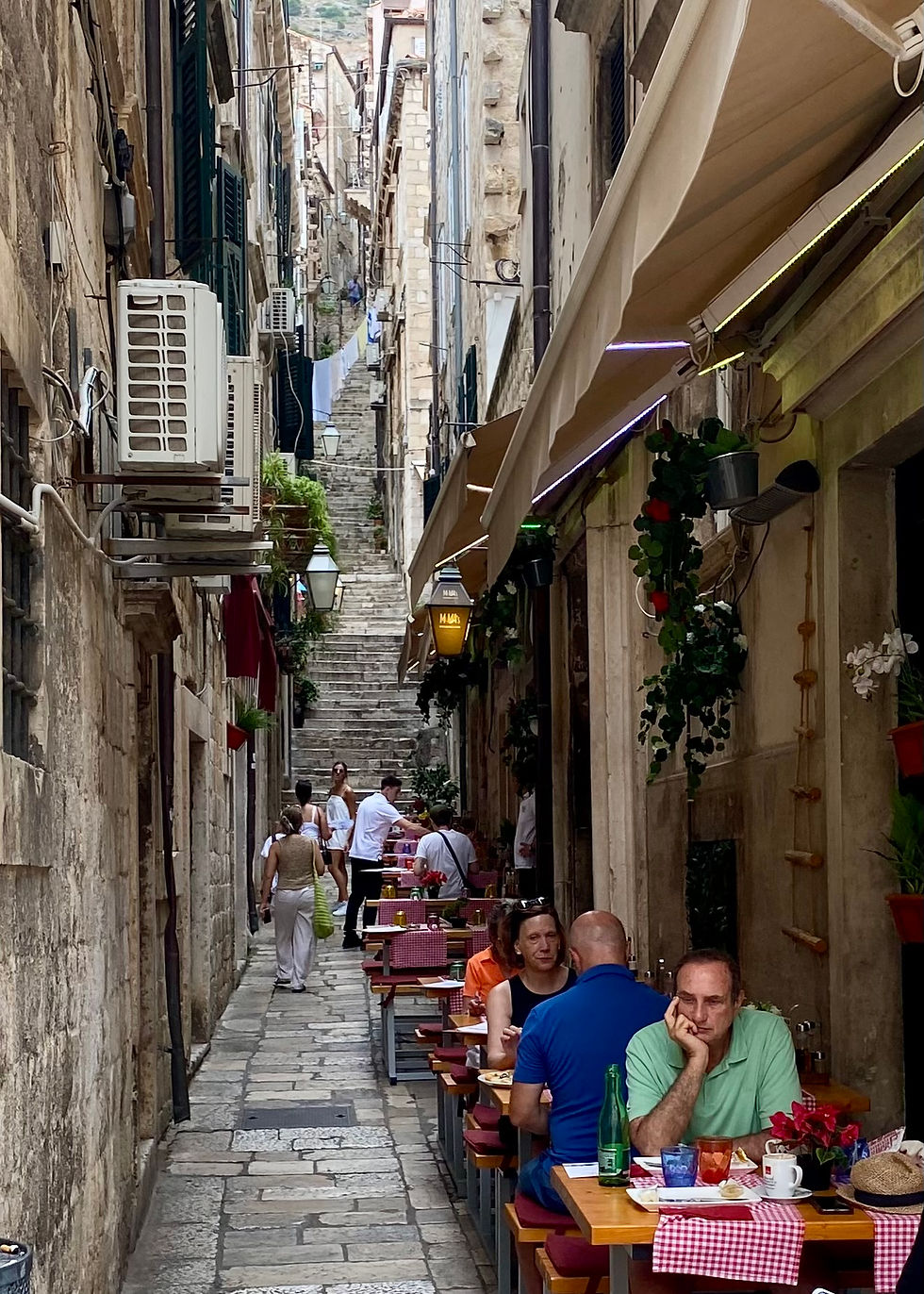
No alley is too narrow to host a cafe. You gotta love Europe.
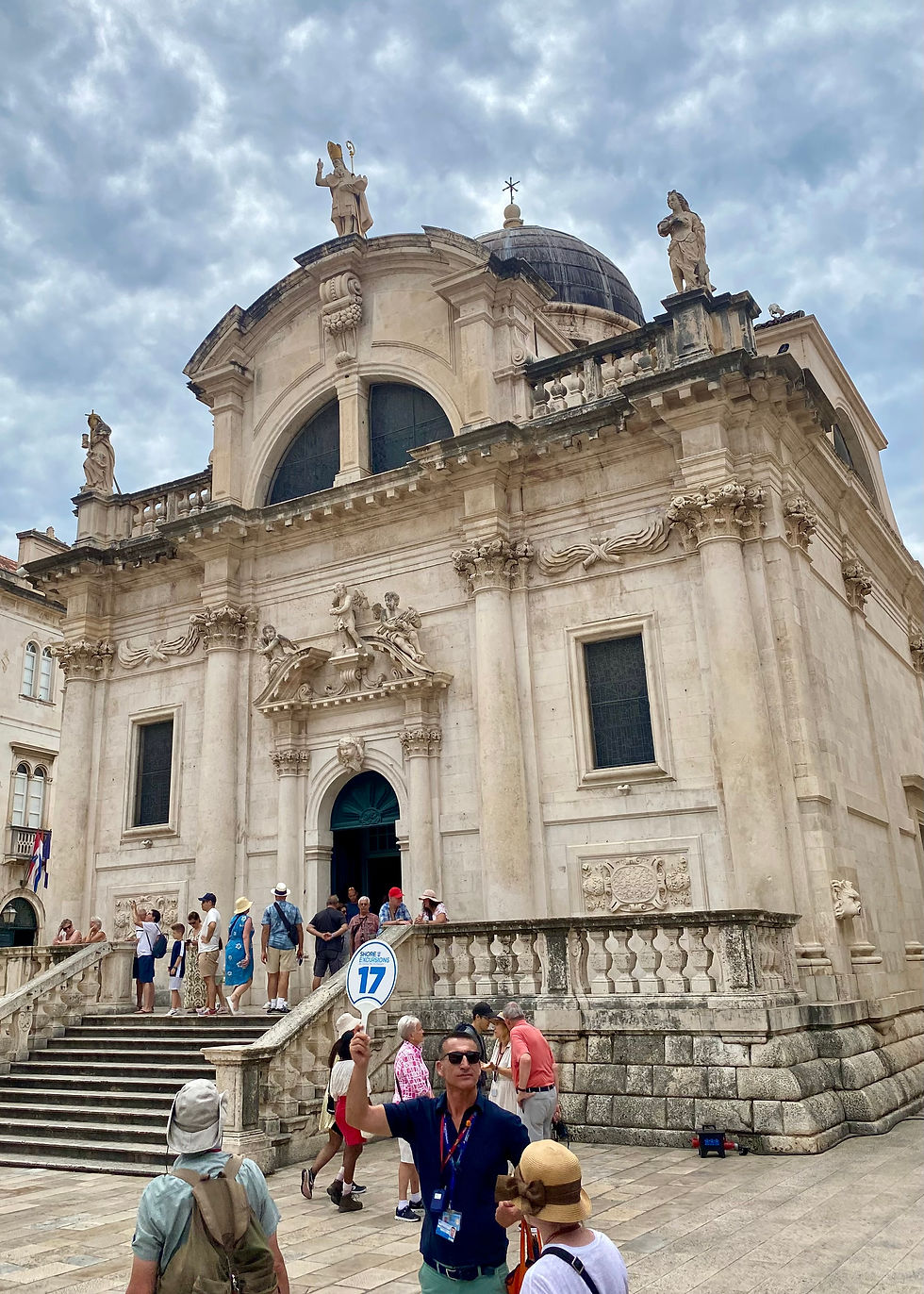
Lots of churches. This is the Cathedral of the Assumption of the Virgin Mary.

Inside the Cathedral.

Altar of the Cathedral.
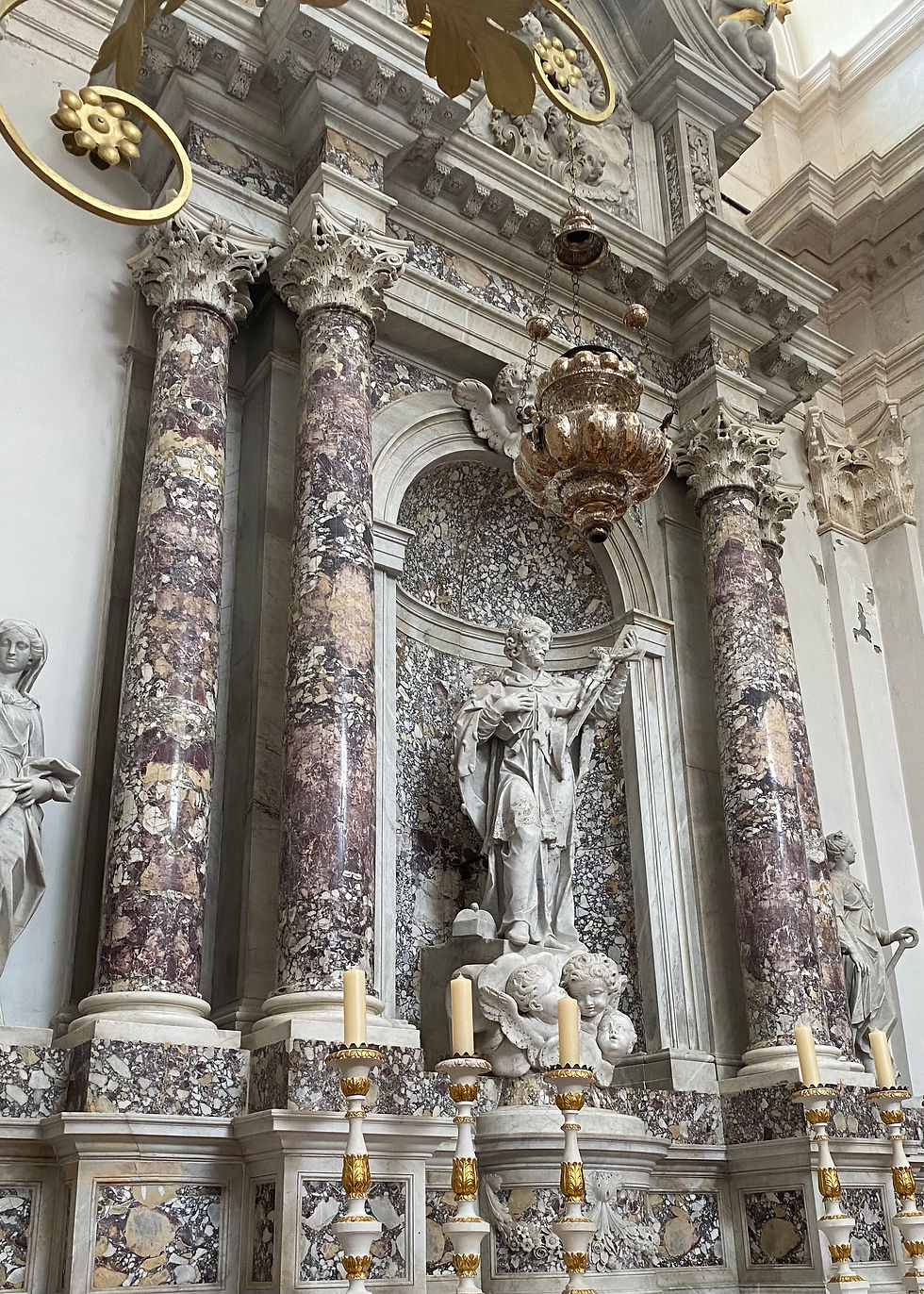
The Cathedral was gorgeous.
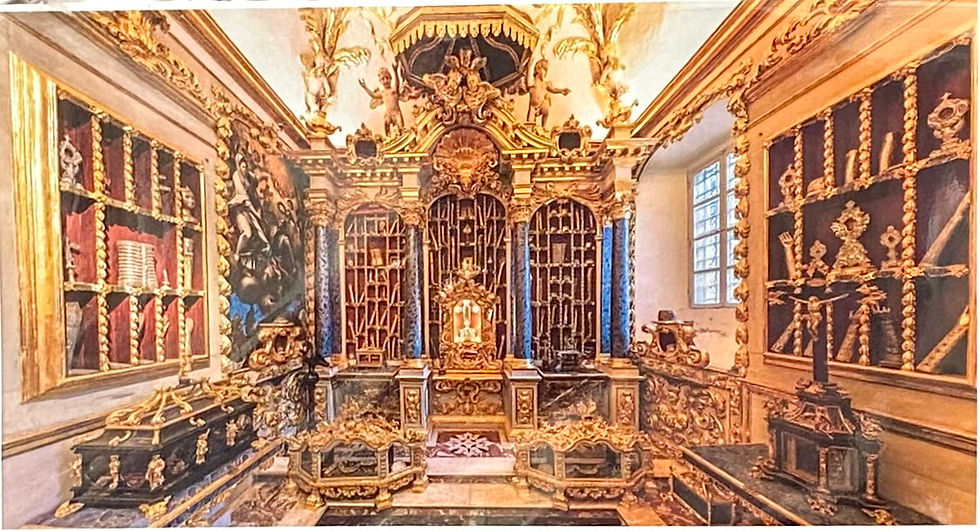
The Cathedral Treasury has to be seen to be believed. No photos were allowed inside, but this is a photo of a poster outside that shows what’s inside. You can’t see it here, but they say they have the head of their patron saint, Saint Blaise, inside a helmet-like crown. We saw the crown, but couldn’t see inside it. In the very center of the room, and this photo, is a small golden cross with a glass front. Displayed inside, and we could see it clearly, is a scrap of wood that they believe is from the crucifiction cross.

Moving on, this was inside the Dominican Church and Monastery, which also houses a wonderful museum.
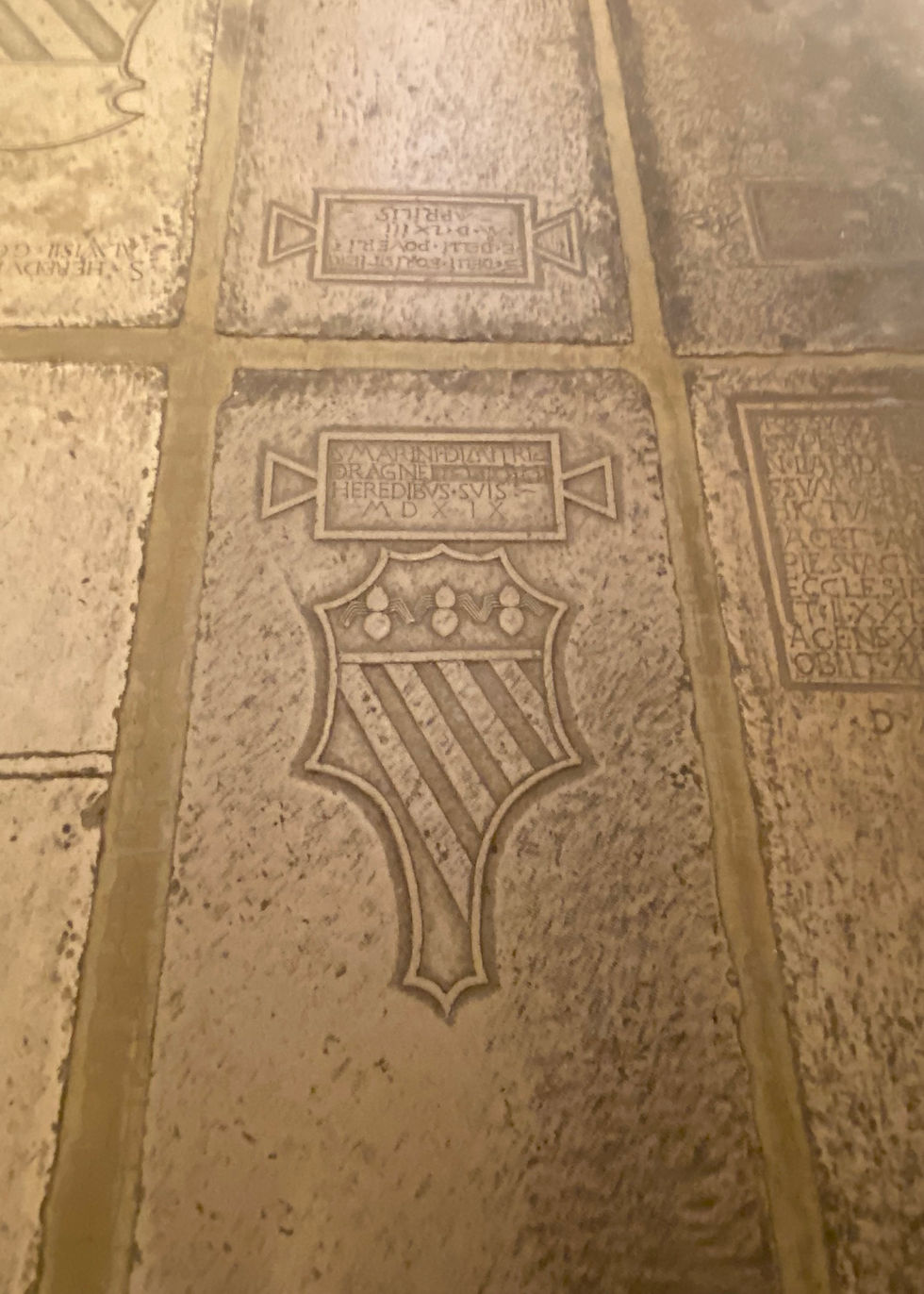
You could walk on the graves of important people of the time who were buried inside the monastery.

The building on the right is the Rectory. The Rector, who ruled over the city, lived and worked here.

There are numerous gift shops within the walls.
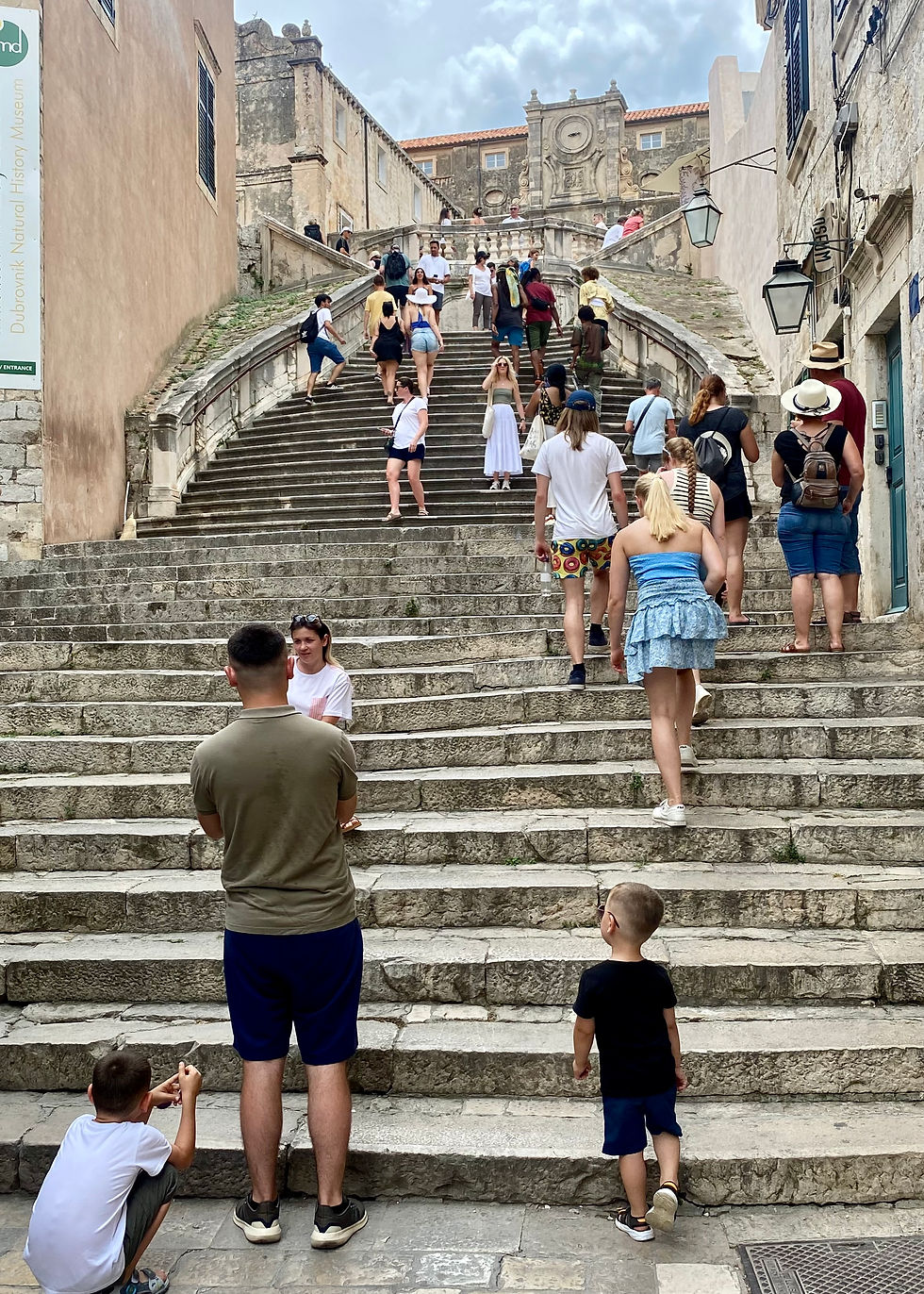
These are the Jesuit Stairs, which were featured in an episode of the Game of Thrones, or so I’m told.
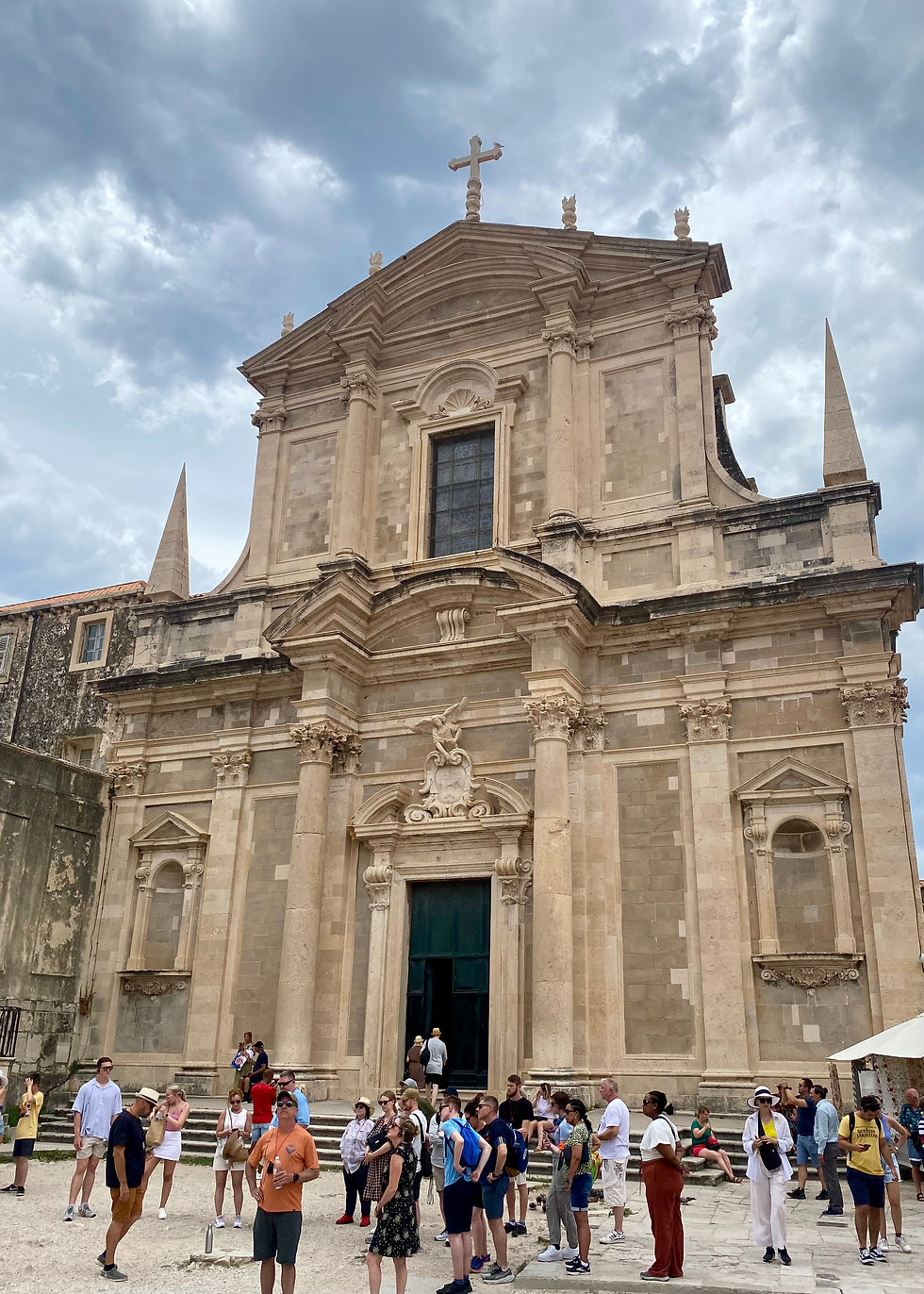
At the top of the Jesuit Stairs is the Jesuit Church of Saint Ignatius.
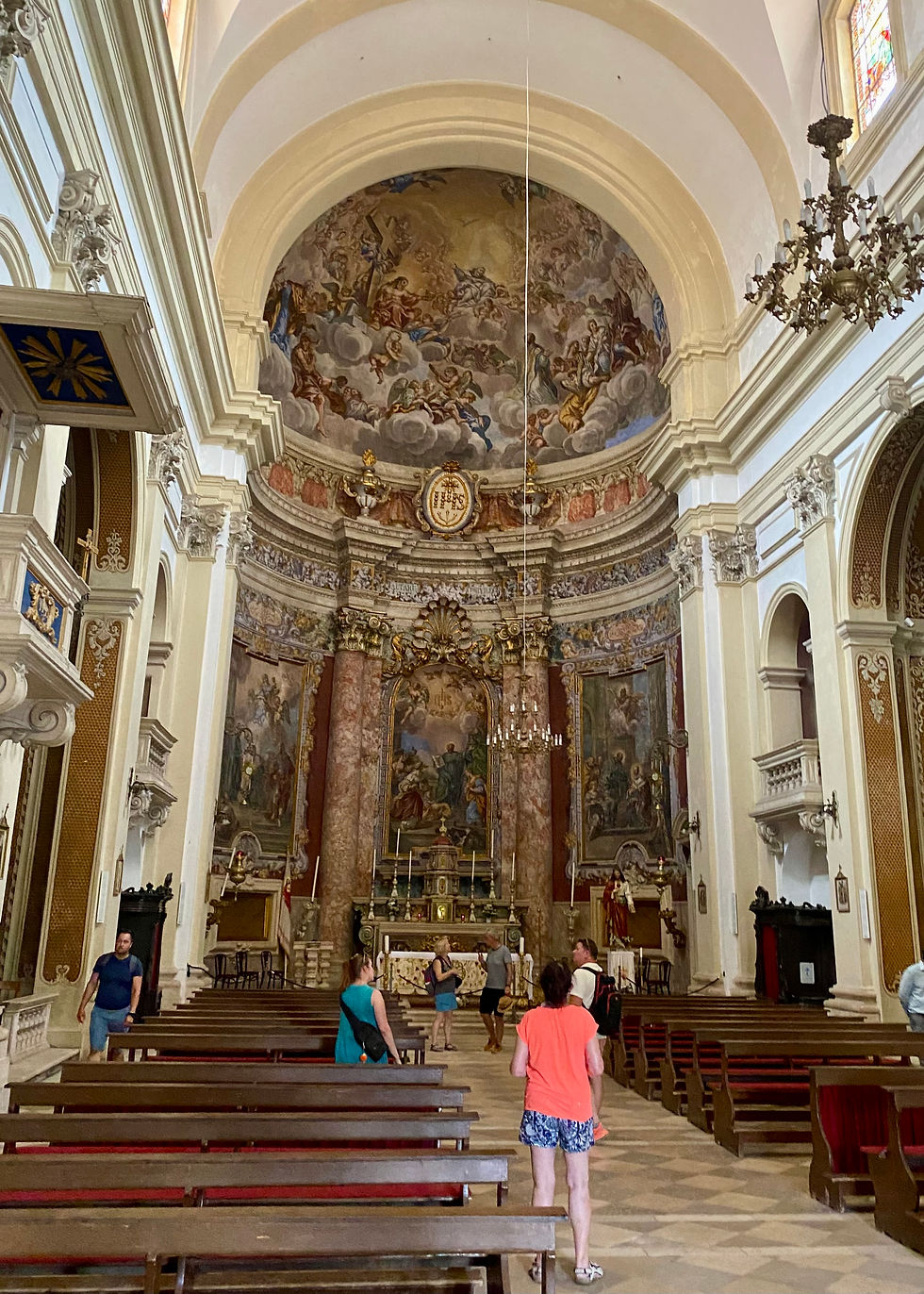
Inside the Jesuit Church.

More inside the Jesuit Church.
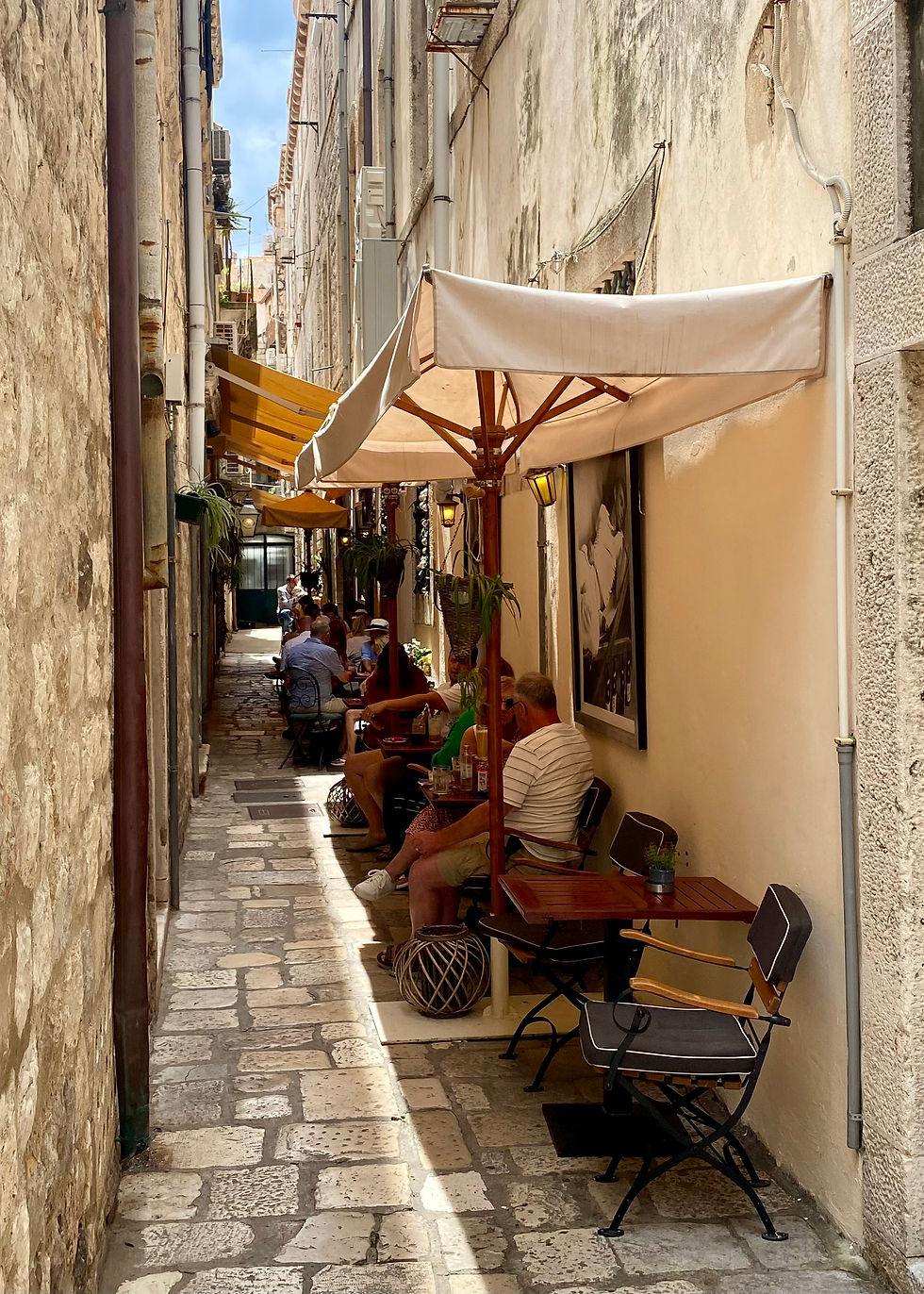
Another narrow alley getting maximum use as a linear cafe.
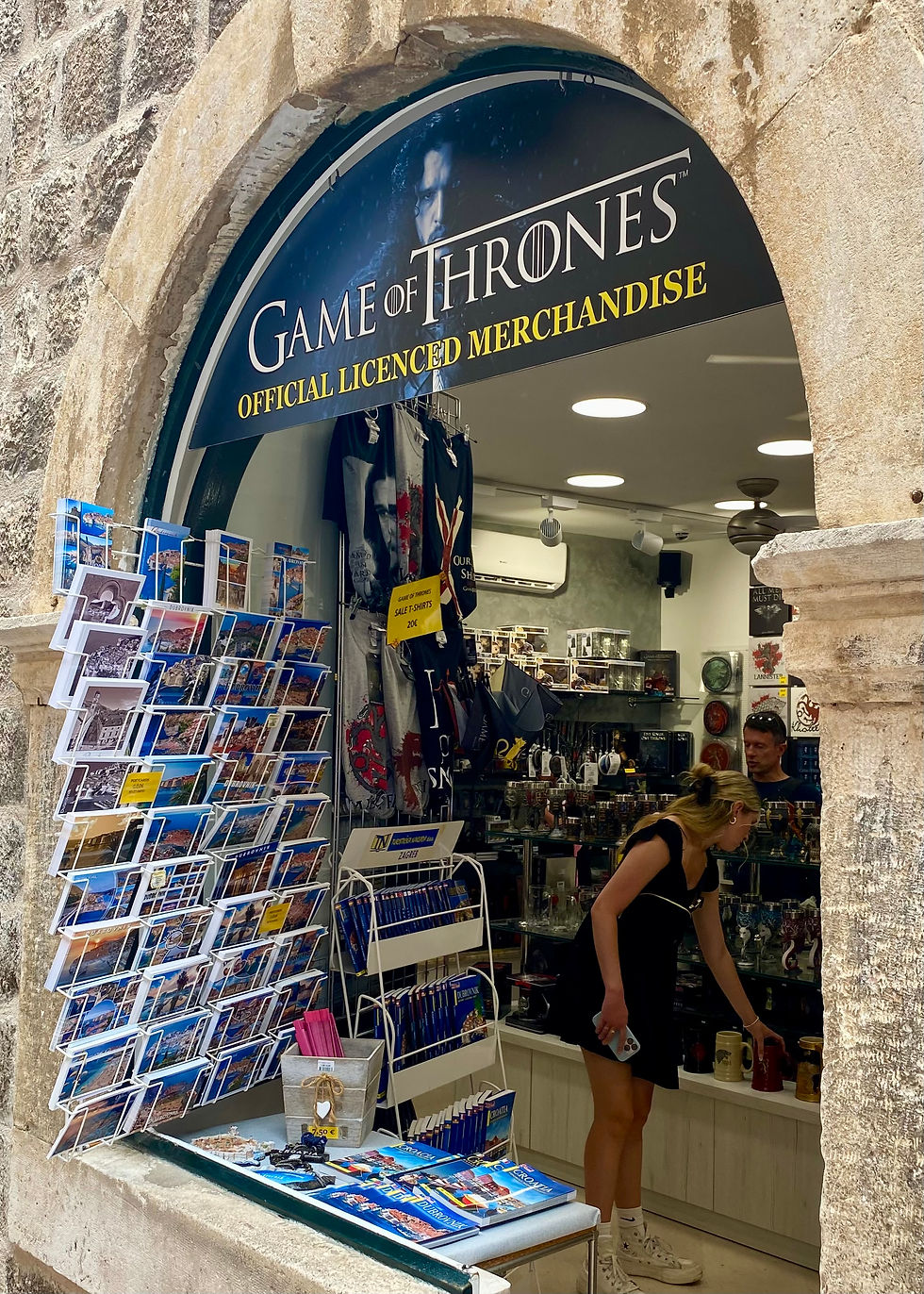
Game of Thrones merchandise was for sale everywhere.

There were a LOT of tourists in the city.
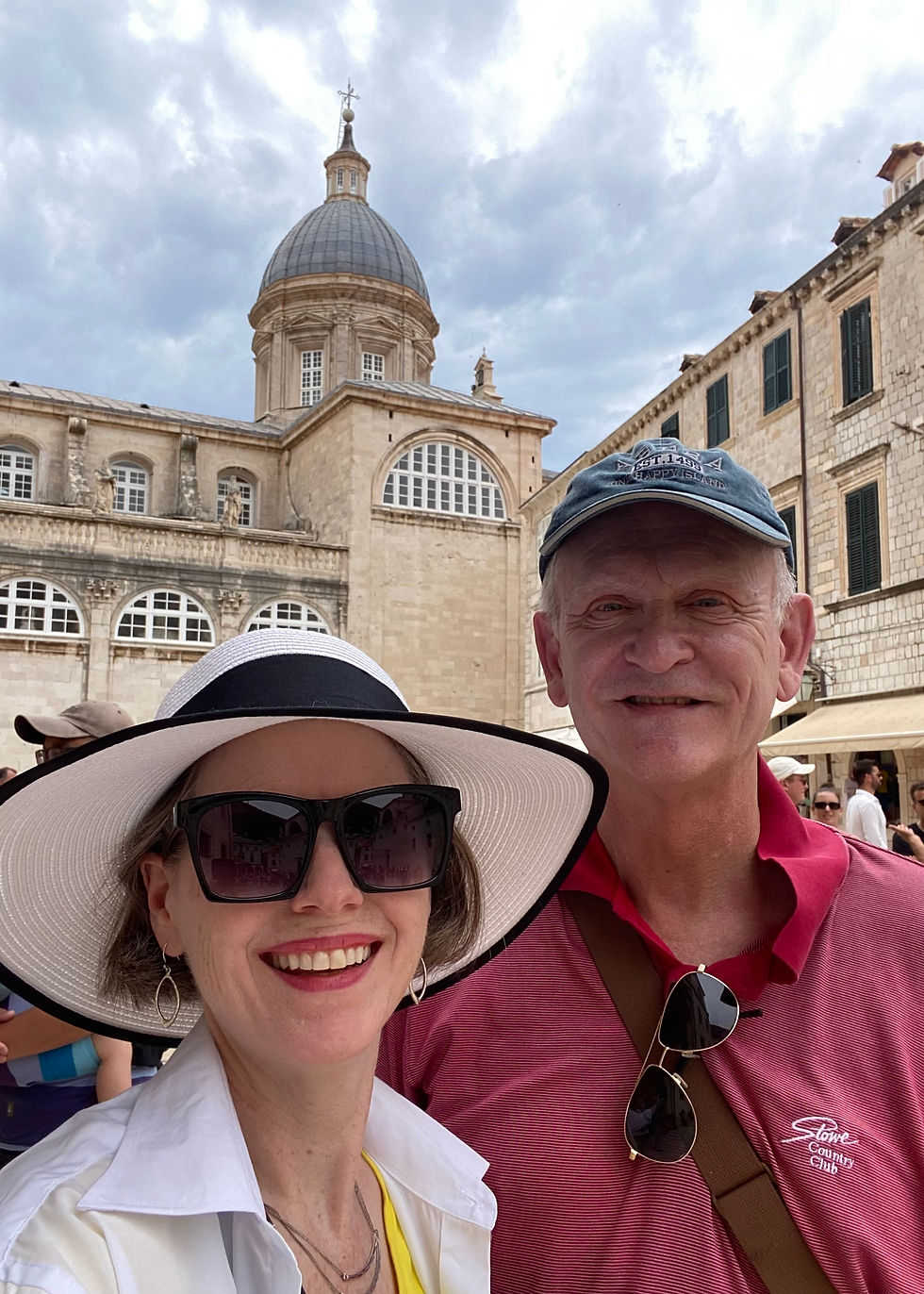
And we were two of them.

There were posters on the wall showing the damage to the old walled city during the shelling by the Yugoslav Peoples Army in 1991. It has all been repaired.
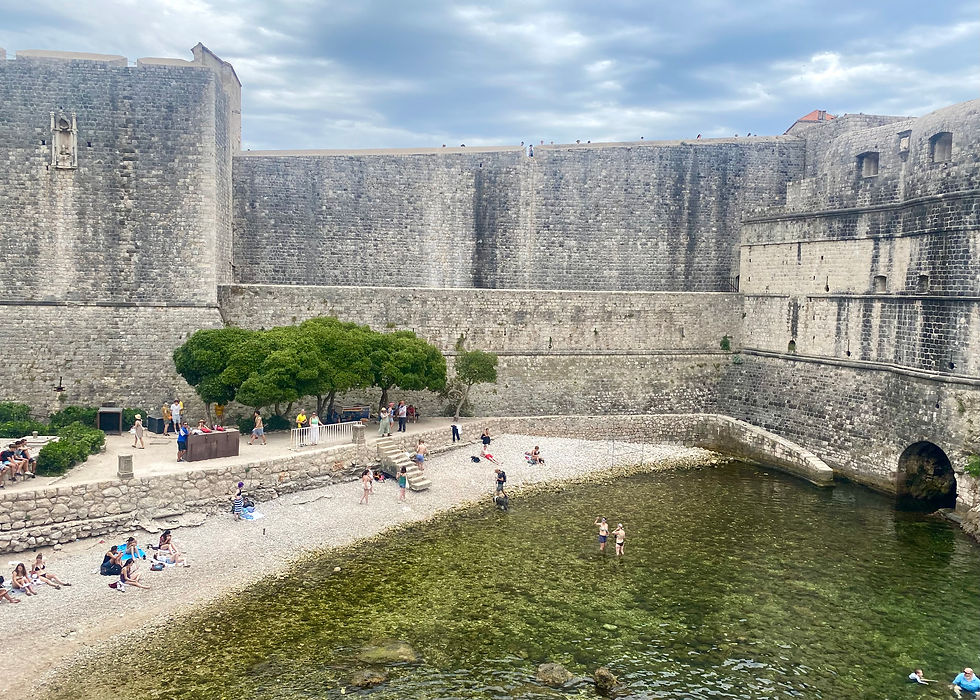
Outside the walls. This is Blackwater Bay, which was used in the Game of Thrones.

Pretty spot outside the walls.
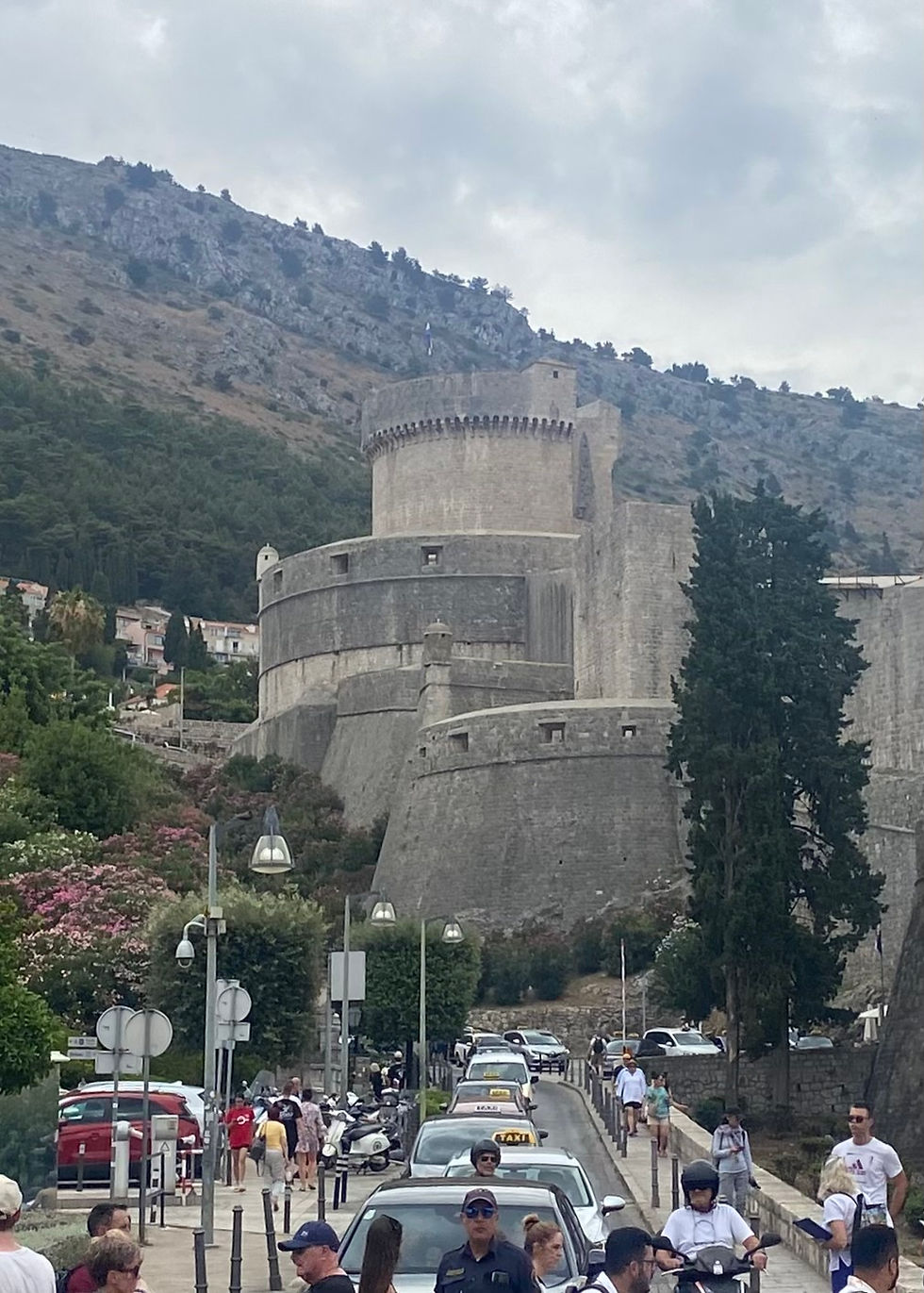
Quite a formidable sight.

Well, well, well. I’ll end this post with photo of a well in the old city.


